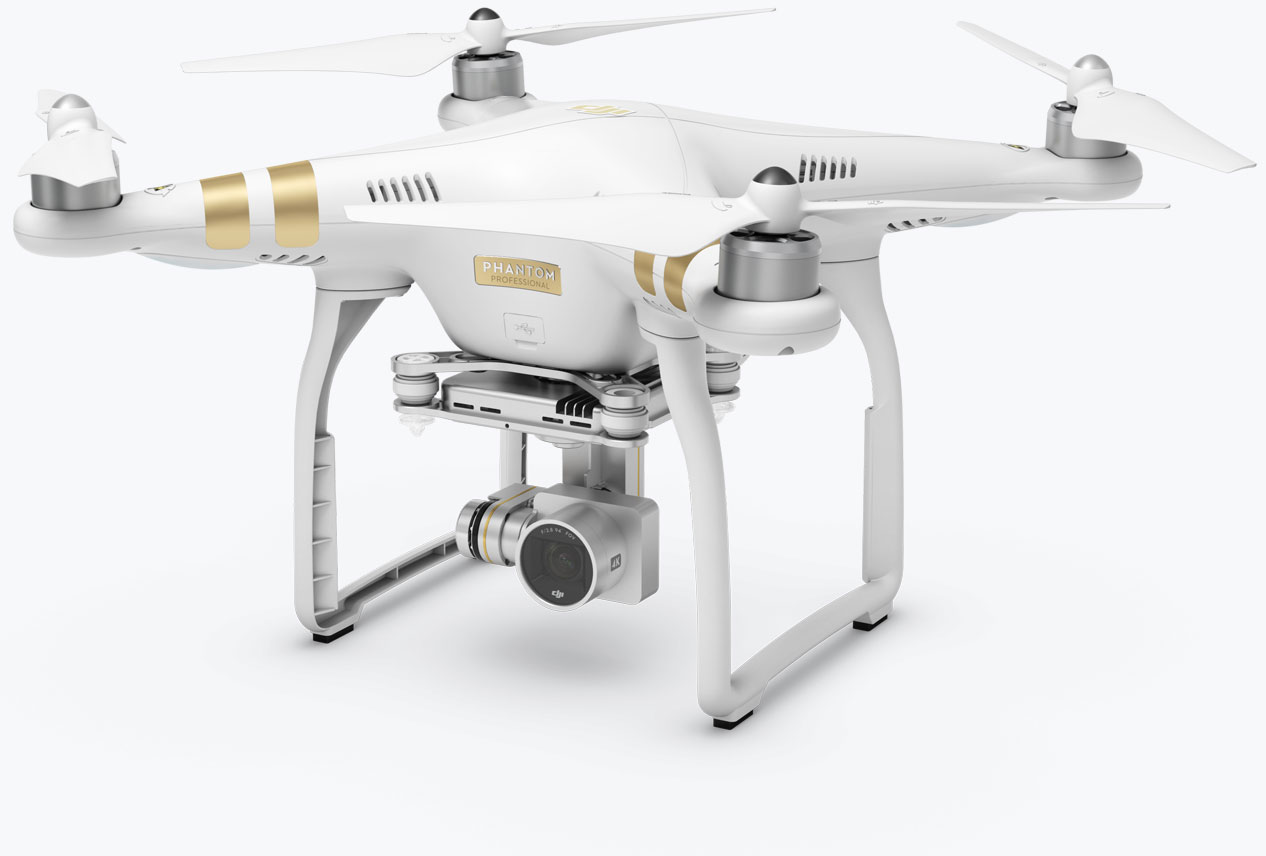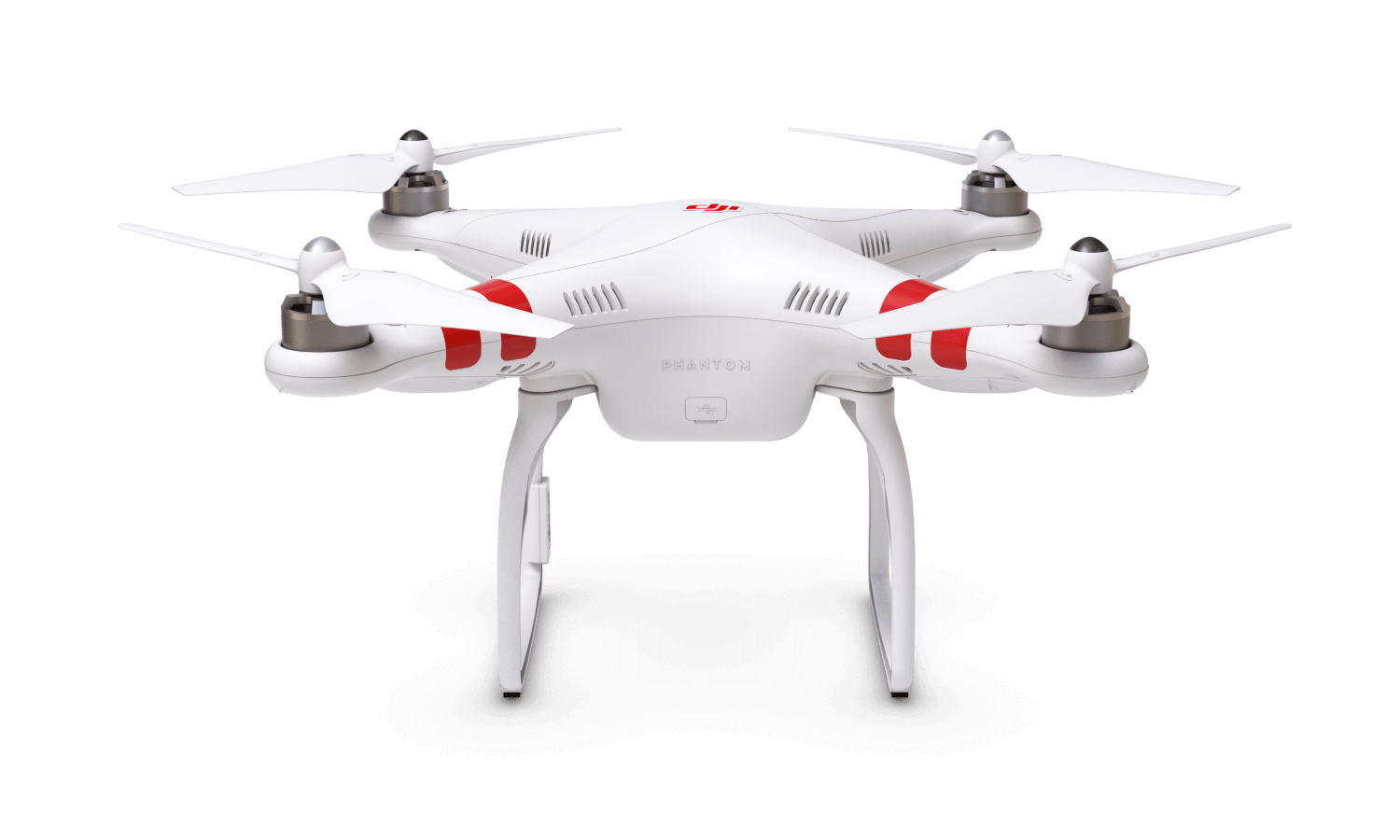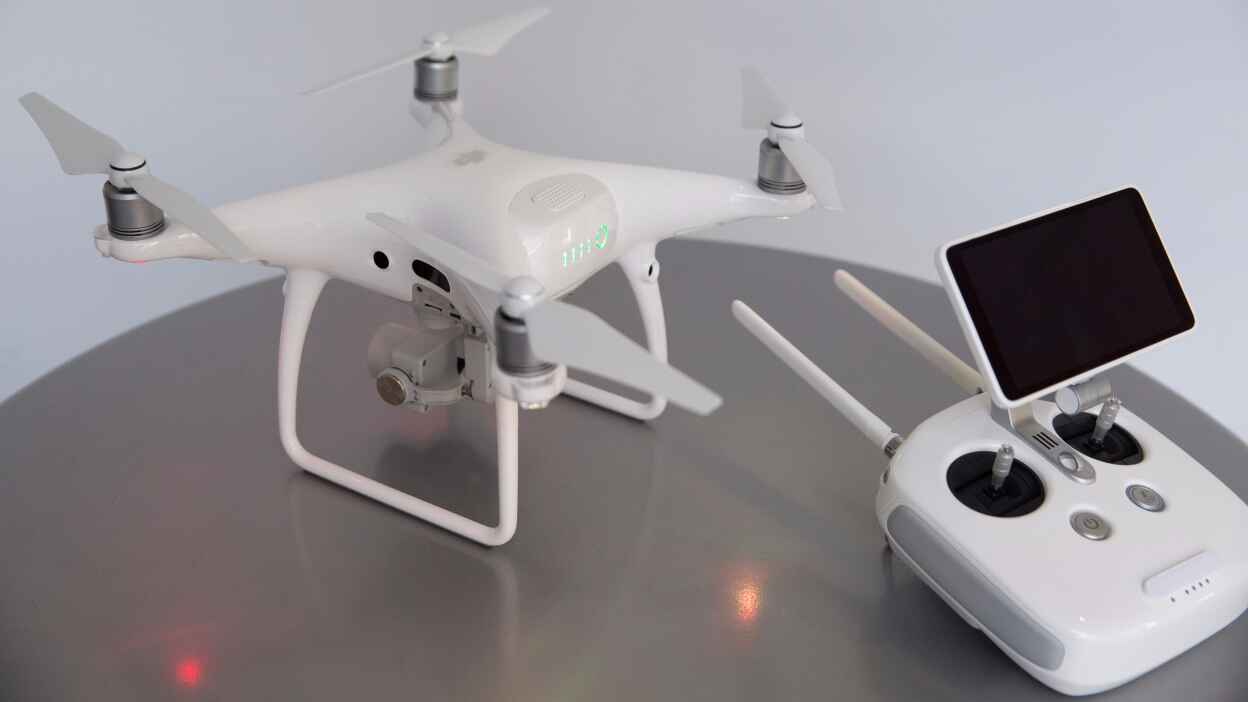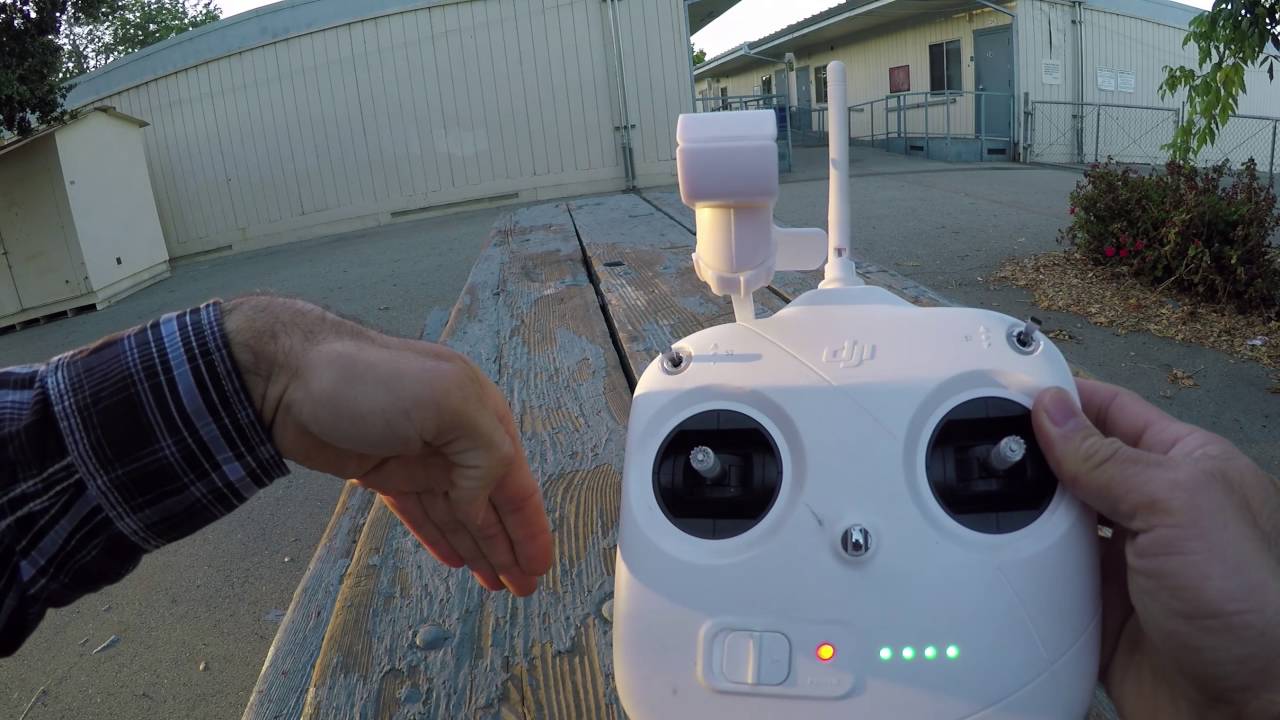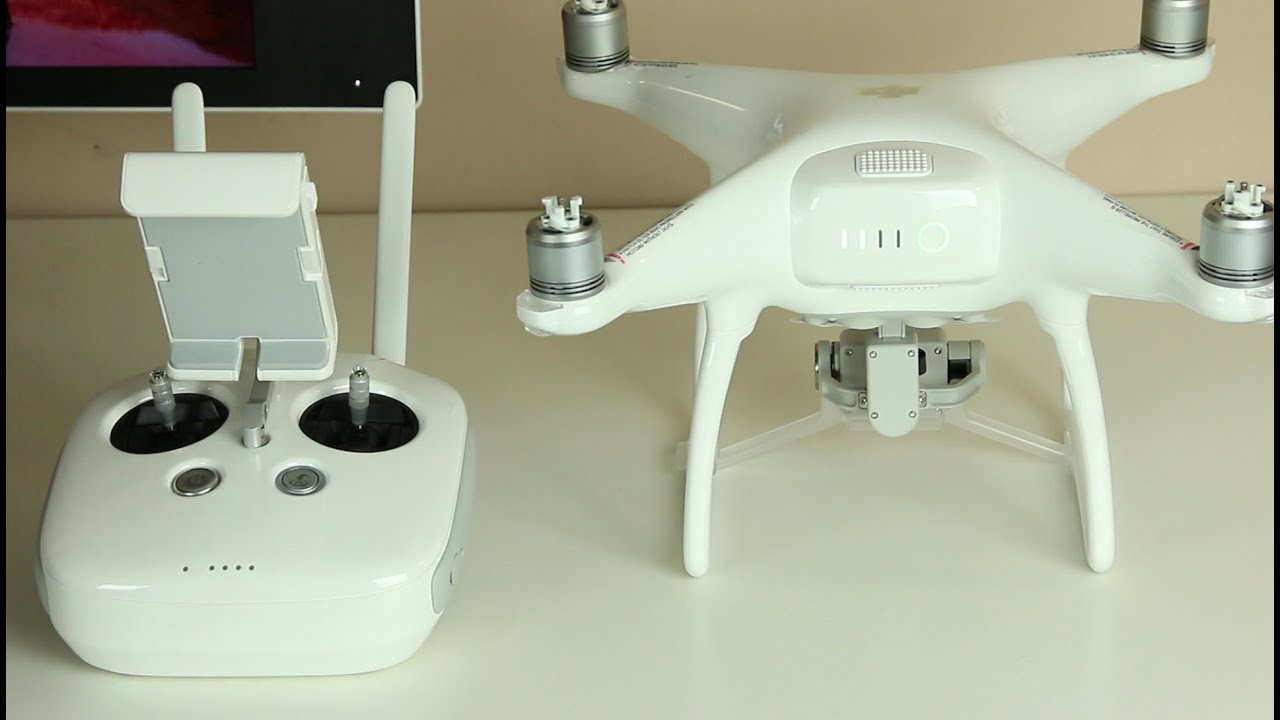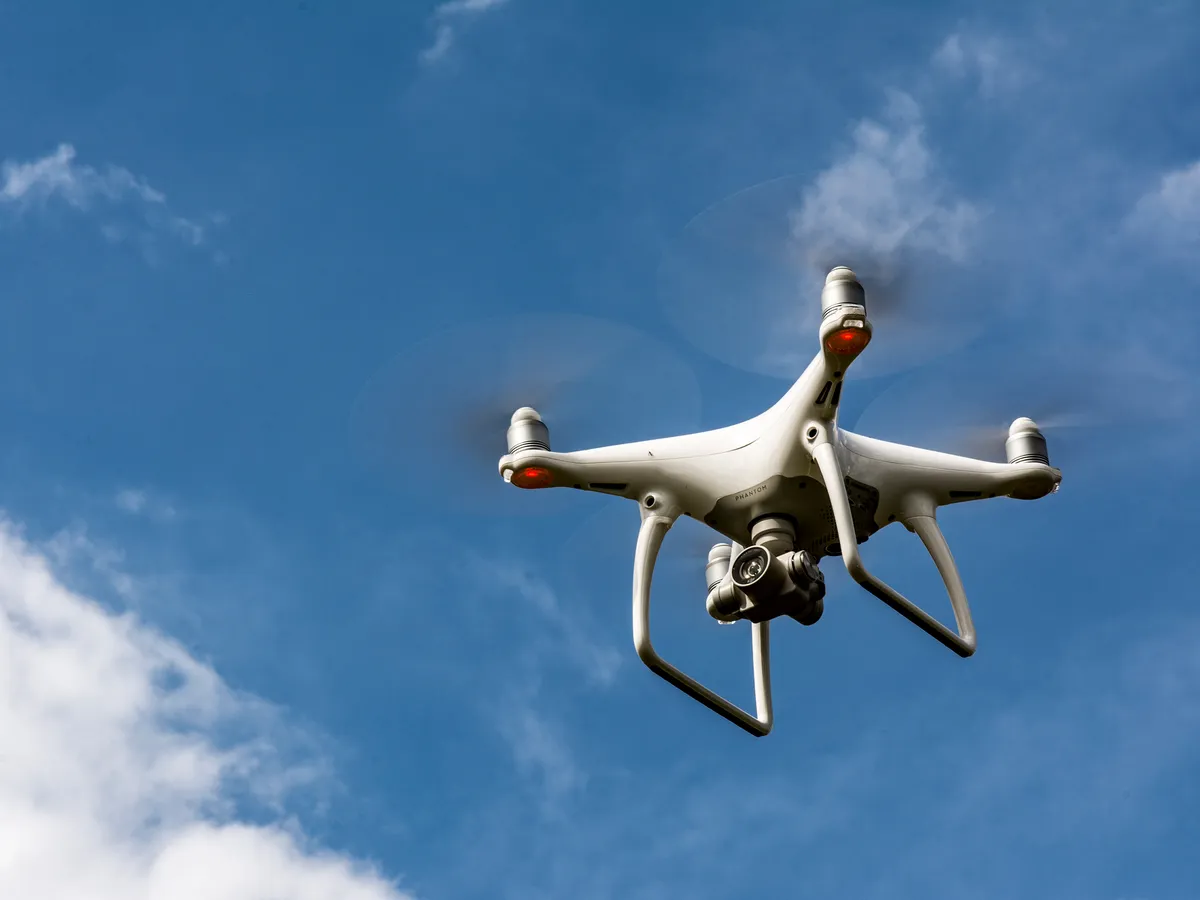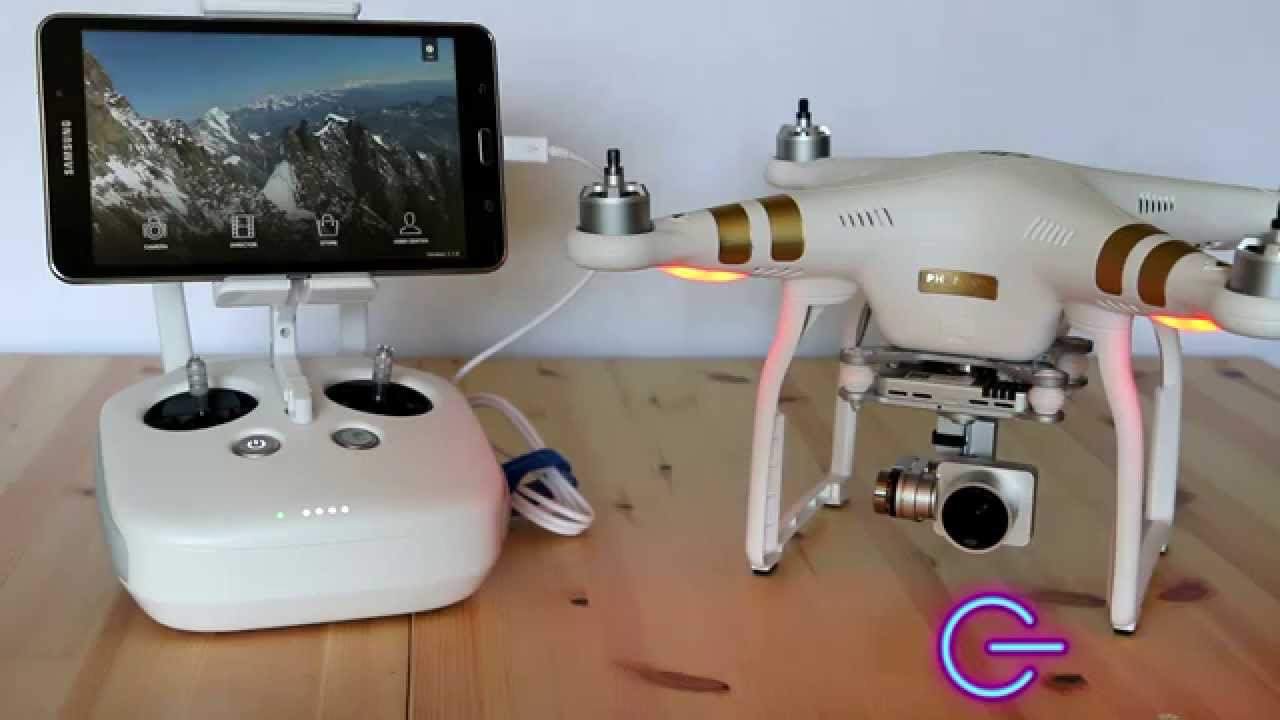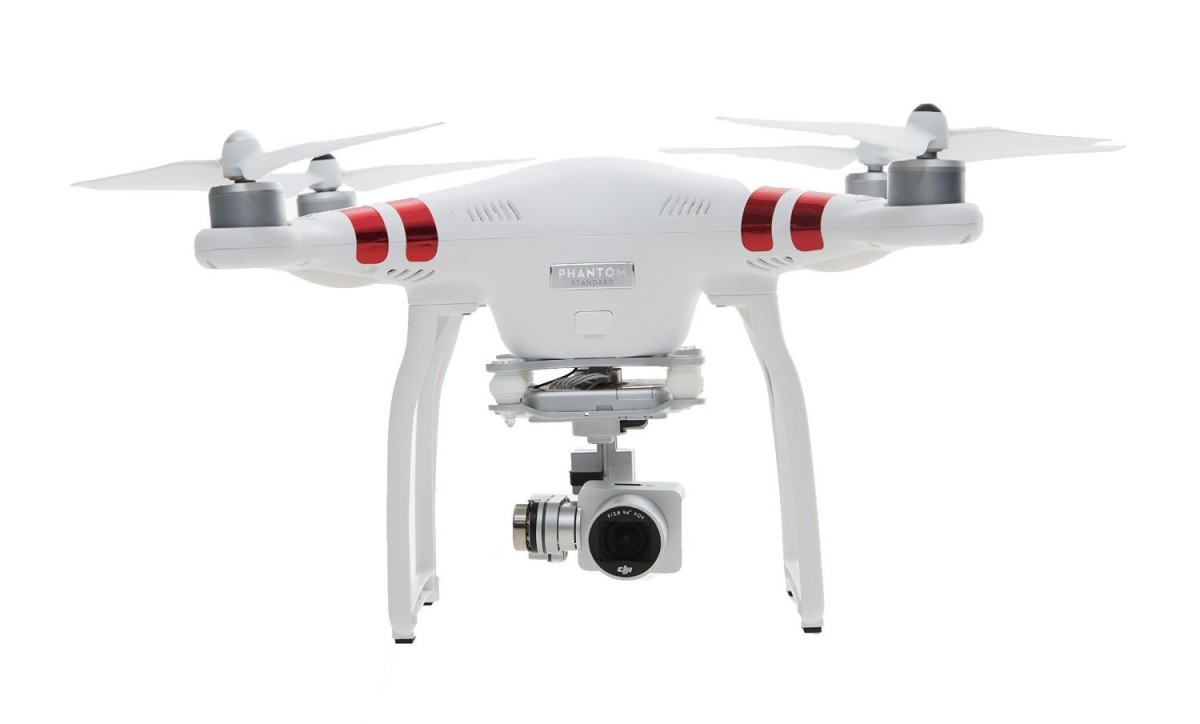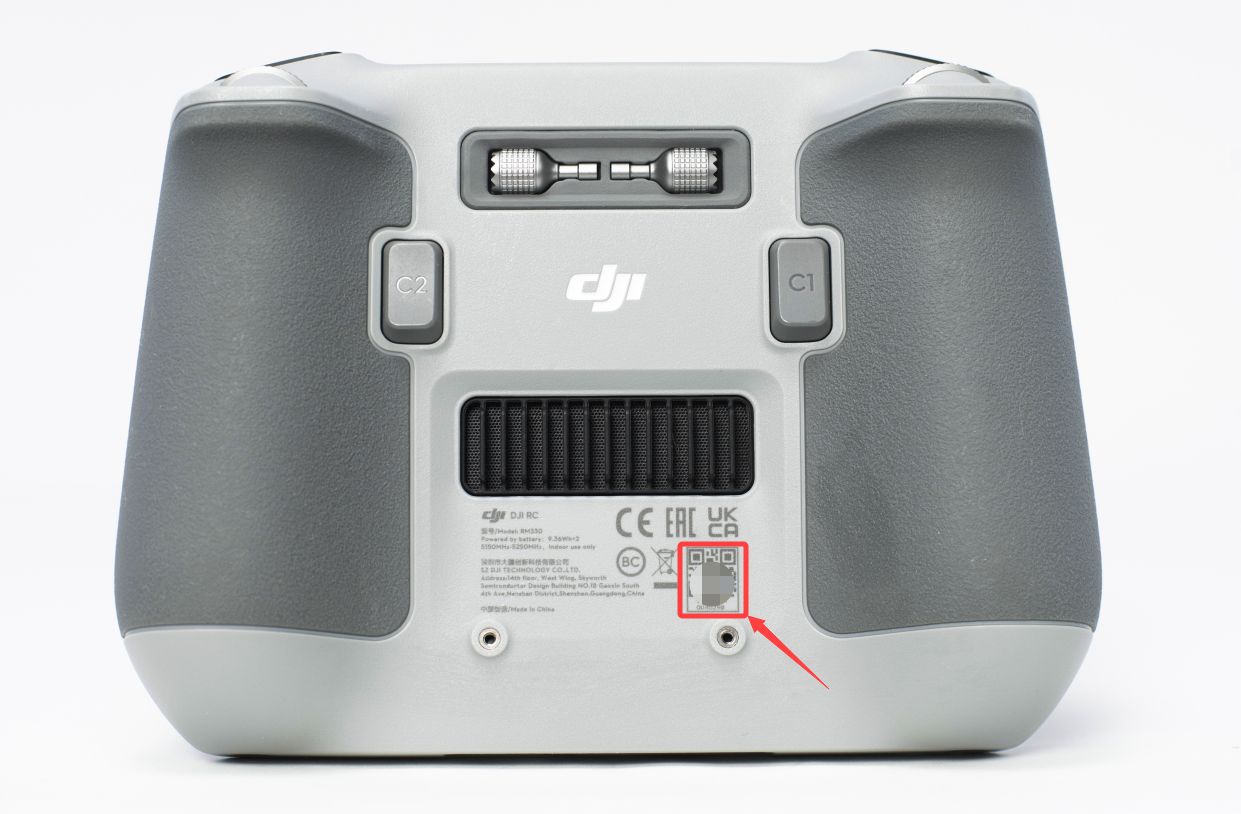Introduction
The world of drones has revolutionized the way we capture aerial footage and explore the skies. One of the most prominent and popular drone brands in the market today is the Phantom Drone. Known for its exceptional design, advanced features, and remarkable performance, the Phantom Drone has captivated the hearts of hobbyists, enthusiasts, and professionals alike.
With its sleek appearance and cutting-edge technology, the Phantom Drone has become synonymous with innovation and quality. It has redefined the limits of aerial photography, enabling users to capture stunning shots from breathtaking heights.
But who really makes the Phantom Drone? What is the story behind this extraordinary flying machine? In this article, we will delve into the fascinating history and development of the Phantom Drone, explore its manufacturing process, examine its components and specifications, and discuss its place in the drone market today.
Whether you are a drone enthusiast considering purchasing a Phantom Drone or simply interested in the technology behind it, this article will provide valuable insights into the world of Phantom Drones.
History of the Phantom Drone
The Phantom Drone was first introduced to the market in January 2013 by DJI Innovations. DJI, short for Dà-Jiāng Innovations Science and Technology Co., Ltd., is a renowned Chinese drone manufacturer and one of the industry’s leaders.
With the release of the Phantom 1, DJI set a new standard for consumer drones. It was the first ready-to-fly drone that offered a user-friendly experience with advanced flight capabilities and high-quality aerial photography.
As the Phantom series gained popularity, DJI continued to innovate and enhance its features. The second generation, Phantom 2, introduced upgraded flight controls, improved stability, and better camera capabilities. It quickly became a favorite among drone enthusiasts and photographers.
The Phantom 3, released in 2015, was a game-changer for the industry. It incorporated groundbreaking features such as GPS waypoint navigation, intelligent flight modes, and a high-resolution camera. This enhanced the drone’s capabilities and made it accessible to a wider range of users, including professionals in industries such as filmmaking, real estate, and surveying.
In 2016, DJI launched the Phantom 4, which further solidified its position as an industry leader. The Phantom 4 introduced obstacle avoidance sensors, allowing the drone to detect and avoid objects in its flight path autonomously. This advanced feature enhanced safety and made flying the Phantom drone even more user-friendly.
Since then, DJI has continued to release new versions of the Phantom series, further pushing the limits of aerial photography and videography. The latest iteration, the Phantom 4 Pro, boasts an incredible 1-inch sensor and a range of intelligent flight modes, making it a powerhouse for capturing stunning aerial imagery.
Over the years, the Phantom Drone has become a symbol of DJI’s dedication to pushing the boundaries of drone technology. Its success can be attributed to DJI’s commitment to continuous innovation, meticulous engineering, and a deep understanding of user needs and preferences.
With each new release, DJI has set higher standards for consumer drones, solidifying its position as a market leader and paving the way for the future of aerial imaging.
Development and Design
The development and design of the Phantom Drone showcase DJI’s pursuit of excellence in creating a superior flying machine. The engineers at DJI invest significant time and effort into refining the drone’s design, ensuring optimal performance, durability, and user experience.
One of the key elements in the development of the Phantom Drone is its aerodynamic design. Every curve, angle, and component placement is carefully considered to enhance stability and minimize wind resistance during flight. This design approach allows the Phantom Drone to achieve smoother flights, even in challenging weather conditions.
The Phantom Drone also boasts a lightweight and durable frame, usually made of high-grade materials such as carbon fiber. This combination of strength and lightness enhances the drone’s maneuverability and endurance, allowing it to fly for extended periods without compromising stability.
Another crucial aspect of the Phantom Drone’s design is its camera integration. DJI recognizes the importance of high-quality aerial photography and videography, and they have incorporated advanced camera systems into the drone’s design. The camera gimbals on the Phantom Drones are equipped with 3-axis stabilization, ensuring steady and shake-free footage. The drones also offer various camera options, from entry-level models with built-in cameras to prosumer models with interchangeable lenses, giving users the flexibility to capture their vision from the sky.
In terms of user experience, DJI has prioritized intuitive controls and intelligent features. The Phantom Drone is equipped with an easy-to-use remote controller, featuring responsive joysticks, dedicated buttons for flight modes, and a live video feed from the drone’s camera. Additionally, DJI’s intelligent flight modes, such as Follow Me, Waypoint Navigation, and ActiveTrack, enable users to capture complex shots effortlessly. These features make the Phantom Drone accessible and enjoyable for both beginners and experienced pilots.
Furthermore, DJI places great emphasis on user safety. The Phantom Drone incorporates built-in safety features, including return-to-home functionality, low battery alerts, and geofencing to prevent users from flying in restricted areas. These safety measures give pilots peace of mind while operating their drones.
Overall, the development and design of the Phantom Drone reflect DJI’s commitment to creating an exceptional flying experience. By combining innovative technology, aerodynamic design principles, and user-friendly features, DJI has solidified the Phantom Drone as a top contender in the consumer drone market.
Manufacturing Process
The manufacturing process of the Phantom Drone involves several intricate steps, from component assembly to rigorous quality control measures. DJI takes great care in ensuring that each drone meets their high standards of quality and performance.
The process begins with the sourcing and production of the drone’s components. DJI collaborates with trusted suppliers to obtain the necessary parts, including the frame, motors, electronic components, and camera systems. These components undergo strict quality checks to guarantee their reliability and compatibility with the Phantom Drone.
Once the components are ready, the assembly process begins. Highly skilled technicians meticulously put together each drone, following precise instructions and guidelines provided by DJI. This includes fitting the motors onto the frame, attaching the camera gimbal, and securing all the electronic connections.
After assembly, the drones undergo a series of tests to ensure that they function correctly. Technicians verify the drone’s flight controls, camera stabilization, GPS positioning, and other essential features. Any issues found during the testing phase are addressed and rectified before the drones move on to the next stage.
Once the drones pass the initial tests, they go through a final inspection process. Quality control professionals thoroughly examine each drone to check for any cosmetic defects, performance issues, or potential problems. This stringent inspection guarantees that only drones meeting DJI’s rigorous standards are released to the market.
Throughout the manufacturing process, DJI adheres to strict quality assurance protocols and industry standards. They have established robust quality control systems to ensure that every Phantom Drone leaving their production facility is reliable, safe, and of the highest quality.
Additionally, DJI places a strong emphasis on sustainability in their manufacturing process. They implement eco-friendly practices and seek to minimize the environmental impact of their operations. This includes optimizing energy usage, utilizing recyclable materials, and reducing waste generation.
Overall, the manufacturing process of the Phantom Drone entails a careful and meticulous approach. DJI’s commitment to quality, attention to detail, and sustainable practices ensure that customers receive a high-performance drone that exceeds their expectations.
Components and Specifications
The Phantom Drone incorporates a range of high-quality components and boasts impressive specifications that contribute to its exceptional performance in the skies. Let’s take a closer look at the key components and specifications of this popular drone.
The frame of the Phantom Drone is typically made of durable materials such as carbon fiber or lightweight metals. It is designed to be both sturdy and lightweight, ensuring stability and durability during flight. The frame houses the motors, electronic components, and camera gimbal, providing a solid foundation for the drone’s functionality.
The motors play a critical role in the drone’s flight capabilities. They provide the necessary power and thrust for the drone to navigate through the air. The Phantom Drone usually features brushless motors, known for their efficiency, reliability, and quiet operation. These motors allow the drone to achieve stable flights and execute precise maneuvers.
The drone’s electronic components, including the flight controller, GPS module, and sensors, are responsible for the drone’s autonomous flight capabilities and stability. The flight controller acts as the brain of the drone, processing inputs from the pilot and ensuring smooth and controlled flights. GPS modules enable accurate positioning and navigation, while sensors detect environmental factors and adjust the drone’s flight parameters accordingly.
The Phantom Drone’s camera system is a standout feature, allowing users to capture stunning aerial footage. The camera gimbal provides stability and smoothness, ensuring that video and photos are free from shakes and vibrations. The drone’s camera is capable of recording high-resolution videos and capturing still images with impressive clarity and detail. Some models also offer advanced features like adjustable aperture, zoom capabilities, and RAW image capture, allowing for greater creative control.
In terms of specifications, the Phantom Drone typically offers a range of flight modes to suit various needs and skill levels. This includes modes such as GPS-assisted flight, altitude hold, and automatic takeoff and landing. The flight time of the drone varies depending on the model but can range from around 20 to 30 minutes on a single battery charge.
Additionally, the Phantom Drones are equipped with intelligent flight features such as Follow Me mode, Waypoint Navigation, and ActiveTrack. These features enable the drone to follow a subject, autonomously fly along pre-determined routes, and track moving objects, respectively. These intelligent flight modes add versatility and convenience to the drone’s functionality.
Connectivity options are also an essential aspect of the Phantom Drone. Most models feature Wi-Fi or OcuSync technology, allowing users to connect their drones to mobile devices for real-time video streaming and control. This enables pilots to monitor their flight and capture footage from a first-person perspective.
With their impressive components and specifications, the Phantom Drones offer a powerful and versatile aerial photography and videography platform. Whether you’re a professional filmmaker or an enthusiast capturing stunning landscapes, these drones provide the tools you need to elevate your creativity and capture breathtaking shots from the sky.
The Phantom Drone and DJI
The Phantom Drone has become synonymous with DJI, as it is one of the flagship products of the renowned drone manufacturer. DJI’s commitment to innovation, quality, and user-centric design has made the Phantom Drone a standout performer in the market.
One of the key factors contributing to the success of the Phantom Drone is DJI’s extensive experience and expertise in the drone industry. With years of research and development, DJI has continuously pushed the boundaries of drone technology, and the Phantom Drone is a direct result of this commitment.
The Phantom Drone embodies DJI’s core values of performance, reliability, and ingenuity. It showcases DJI’s dedication to delivering cutting-edge features that cater to the diverse needs of drone enthusiasts, professionals, and businesses alike.
DJI’s unwavering focus on user experience is evident in the design and functionality of the Phantom Drone. The intuitive controls, intelligent flight modes, and stable flight performance make it easy for users of all skill levels to fly and capture stunning aerial imagery.
Furthermore, DJI provides excellent after-sales support, including firmware updates, customer service, and a vast online community of Phantom Drone users. This continuous support ensures that customers get the most out of their Phantom Drones and stay up to date with the latest advancements in the drone industry.
As one of the industry leaders, DJI’s commitment to safety is also reflected in the Phantom Drone. The inclusion of features like obstacle avoidance sensors, return-to-home functionality, and geofencing further reinforces their dedication to providing a safe and reliable flying experience.
Moreover, DJI’s commitment to sustainability is echoed in their production practices. They strive to reduce waste, minimize energy consumption, and select environmentally friendly materials for the manufacturing of Phantom Drones. This sustainable approach aligns with DJI’s vision of protecting the environment while promoting technological advancements.
With their exceptional performance, reliability, and innovative features, the Phantom Drones have solidified DJI’s position as a pioneer in the drone industry. DJI’s dedication to pushing the boundaries of drone technology and their commitment to user satisfaction make them a trusted and preferred choice for drone enthusiasts worldwide.
Other Brands and Competitors
While the Phantom Drone has gained recognition as a top player in the consumer drone market, it is essential to acknowledge the presence of other brands and competitors in the industry. These players have also brought forth their own innovations and market offerings, providing users with a variety of options to choose from.
One prominent competitor in the drone market is Autel Robotics. Autel Robotics has made a name for itself with its high-performance drones that offer advanced features comparable to the Phantom Drone. Their drones are known for their durability, excellent camera quality, and intelligent flight capabilities, giving them a competitive edge.
Another brand to consider is Yuneec. Yuneec offers a range of drones that cater to different user needs and budgets. Their drones are known for their stable flying capabilities, user-friendly controls, and reliable camera systems. Yuneec has been successful in positioning itself as a viable alternative to DJI’s Phantom series.
Parrot, a French drone manufacturer, is also a notable player in the consumer drone market. Parrot drones offer a unique blend of innovative design, ease of use, and impressive camera capabilities. They have gained popularity among consumers looking for a user-friendly drone experience.
Additionally, it is worth mentioning the rising popularity of another DJI product line, the Mavic series. The compact size, portability, and advanced features of the Mavic drones have made them a favored choice for travel and aerial photography enthusiasts. These drones offer similar performance to the Phantom Drone but with added convenience and ease of transportation.
Furthermore, various smaller drone manufacturers and startups have entered the market, offering niche products and catering to specific needs. These brands provide specialization in areas such as racing drones, agricultural drones, and underwater drones, providing users with unique and tailored drone experiences.
As competition in the drone market intensifies, consumers benefit from the increasing variety of options available. This competition drives innovation and pushes brands to continually improve their products, ultimately benefiting the end-users.
While the Phantom Drone remains a popular choice for many, it is crucial for consumers to consider their specific needs, budget, and preferences when selecting a drone. Exploring different brands and competitors allows users to find a drone that best aligns with their requirements and desired functionality.
Future of the Phantom Drone
The future of the Phantom Drone holds tremendous potential for further innovation and advancement. As the drone industry continues to evolve, DJI is expected to lead the way in shaping the future of aerial photography and videography.
One area where we can expect to see advancements is in the camera technology of the Phantom Drone. DJI is likely to continue pushing the boundaries of image quality, resolution, and dynamic range, providing users with even more stunning aerial footage. Improved gimbal stabilization systems and enhanced camera sensors will further enhance the overall image and video quality.
Autonomous flight features are also projected to see significant improvements. DJI is likely to introduce new intelligent flight modes and capabilities that allow for more precise navigation, obstacle avoidance, subject tracking, and advanced cinematic shots. These features will empower drone pilots to create captivating and professional-level aerial content effortlessly.
In terms of design, we may see the Phantom Drone become even more compact and lightweight while maintaining its robustness and flight performance. DJI will likely continue to innovate in materials and manufacturing techniques to create drones that are easier to transport and operate without compromising on durability and stability.
Battery technology is another area of potential improvement. Longer flight times and faster charging capabilities will further enhance the user experience and allow drone pilots to spend more time capturing aerial footage. DJI is expected to continue investing in research and development to achieve breakthroughs in battery technology.
Furthermore, the future of the Phantom Drone will likely involve advancements in software and connectivity. Real-time video streaming, improved remote control capabilities, and seamless integration with mobile devices and advanced editing software are areas where DJI is expected to focus its efforts to enhance the overall user experience.
There is also growing interest in the commercial and industrial applications of drones. As technology continues to evolve, DJI may further expand the features and capabilities of the Phantom Drone to meet the specific needs of industries such as agriculture, construction, surveying, and public safety.
In summary, the future of the Phantom Drone looks promising as DJI continues to invest in research and development. With advancements in camera technology, autonomous flight capabilities, design, batteries, software, and connectivity, the Phantom Drone is poised to remain at the forefront of aerial photography and videography. As the drone industry progresses, DJI will continue to set new standards and pave the way for exciting innovations in the years to come.
Conclusion
The Phantom Drone has undoubtedly made a significant impact in the world of drones, providing users with a powerful and versatile aerial imaging platform. DJI’s commitment to innovation, quality, and user-centric design has made the Phantom Drone a top choice for drone enthusiasts, professionals, and businesses worldwide.
From its humble beginnings with the Phantom 1 to the advanced capabilities of the Phantom 4 Pro, the Phantom Drone has continuously evolved, pushing the boundaries of aerial photography and videography. DJI’s relentless pursuit of excellence is evident in the design, performance, and features of each iteration.
The Phantom Drone’s sleek design, intelligent flight modes, and high-quality camera systems have enabled users to capture stunning aerial footage with ease. Whether it’s capturing breathtaking landscapes, documenting special events, or aiding industries in various applications, the Phantom Drone has proven its versatility and reliability.
Moreover, DJI’s commitment to safety, sustainability, and customer support is commendable. The inclusion of safety features, sustainable manufacturing practices, and continuous after-sales support ensures that users have a safe and enjoyable experience with their Phantom Drones.
While the Phantom Drone remains a leader in the consumer drone market, it is essential to recognize the presence of other brands and competitors who offer their own unique features and offerings. The competition drives innovation and enhances the overall quality of drones available to consumers.
Looking ahead, the future of the Phantom Drone holds immense promise. Advances in camera technology, autonomous flight capabilities, design, battery life, and software are expected to further enhance the user experience and push the boundaries of aerial photography and videography.
As DJI continues to lead the industry in technological advancements and customer satisfaction, the Phantom Drone is poised to maintain its position as an industry benchmark and continue shaping the future of drones.







